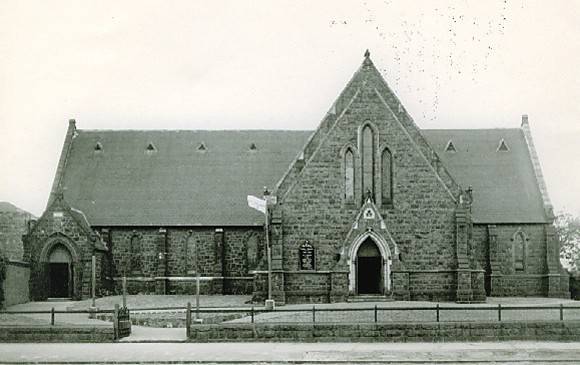| Back to search results » | Back to search page » |
|
Former St Luke's Church of England & Courcelle Organ
Other NameSt Luke's Anglican Church & Organ Location210-218 Dorcas Street,, SOUTH MELBOURNE VIC 3205 - Property No B2023
File NumberB2023LevelState |
|
Statement of Significance
What is significant? Members of the Church of England met at South Melbourne, then known as Emerald Hill, as early as 1854 and a reserve at the corner of Dorcas and Clarendon Streets was set aside for this church in the original township plan of 1852. St Luke's Church of England was subsequently built on this prominent site in 1857. Designed by Francis M White, the nave with front porch to Clarendon Street, was built initially, and further extension work was carried out in 1859. The architect Charles Webb added transepts to the church in 1862, made further additions in 1867 and called tenders for the construction of a vicarage, located north of the church, in 1874. N. Billing and Son were also involved with work at the church in the 1880s, including the design of a cedar pulpit.
The church initiated a retail development on the Clarendon Street frontage of their property in 1881, and this resulted in the relocation of the front porch of the church from Clarendon Street to Dorcas Street. As a result, the church approach and entry were reorientated from the west to the south.
The existing church is cruciform in plan, built in bluestone and designed in an Early English Gothic manner. The simple exterior of rock-faced ashlar and bluestone and freestone dressings, incorporates stepped buttresses and lancet windows with label moulds and a slate roof with simple gable vents. Differences in detailing distinguish the earlier work from that executed later. The interior of the church features a hammer beam ceiling and some intact ecclesiastical fittings.
.How is it significant? St Luke's Church complex, South Melbourne is of architectural and historical significance to the State of Victoria.
Why is it significant? St Luke's Church is of architectural significance as an important and scholarly work of early Melbourne architect, Francis M. White. Built on a prominent site in Clarendon Street, it was an early landmark in the area . The polychromatic vicarage, by well known Melbourne architect, Charles Webb, adds to the integrity of the site.
St Luke's Church is of historical significance as one of the first substantial buildings erected in South Melbourne, the development of which was greatly effected by the increase in Melbourne's population as a result of the Victorian gold rush. It remains as an illustrative example of the development of South Melbourne in this early period.
St Luke's Church is of historical significance for its associations with the early development of the Anglican church in Victoria.
Adapted from Heritage victoria Statement of Significance: 22/07/2013
Classified: 'Regional' 05/10/1967
Revised: 03/08/1988
Organ Statement of Significance: Built in 1865 by the London organbuilder John Courcelle, this instrument was one of seven organs he is known to have exported to Victoria in the 1860s. In 1875 George Fincham inserted seven additional stops which had been prepared for in the original design. Following several moves, the organ was rebuilt in 1937 by Fincham & Sons and placed on a loft in the south transept when the action was electrified, a detached console supplied and several new ranks of pipework introduced. Although greatly altered from the original, the central case facade, with three Gothic gables, together with the Great windchest and a number of ranks of pipework have been retained from the Courcelle organ.
Organ Classified: 'Local' 06/04/1989
Group
Religion
Category
Church




